Warning over wood burning pollution in Chorley as appeal goes out for air quality monitoring volunteers
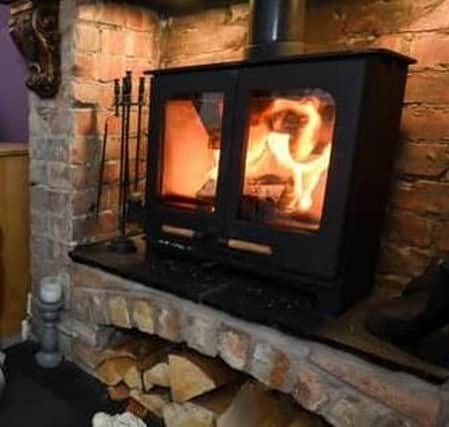

Green Party member Mark Tebbutt is also calling for those living in the district to think twice before using wood burners – one of the major sources of the so-called “PM2.5” particulate matter that he is worried about.
He started trying to establish local concentrations of the pollutant back in 2017 when he purchased a monitor for his own garden. Since then, he has funded five others, which are placed outside the properties of family and friends across the borough.
Advertisement
Hide AdAdvertisement
Hide AdMark says he acted because he was unaware of any attempt by Chorley Council to assess levels of PM2.5, which can contain toxins that enter the bloodstream and are transported around the body – gathering around the heart, brain and other organs.
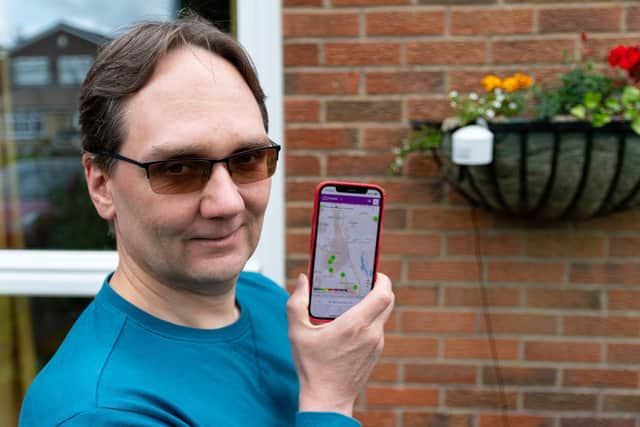

The local authority has told the Lancashire Post that it does now monitor particulate pollution at several locations. However, Mark says that the highly localised nature of PM2.5 pollution – especially when it stems from wood burning – means that measurements have to be taken across a wide area.
To that end, he is looking to recruit volunteers to host monitoring kit – for at least 12 months – in the Chorley Hospital and Eaves Lane areas, along with the surrounding villages.
Results from the equipment Mark has installed to date have shown that recently-reduced recommended PM2.5 limits set by the World Health Organisation (WHO) are at times being exceeded in all the areas of Chorley covered by the devices – although that is in common with most of the planet, he acknowledges.
Advertisement
Hide AdAdvertisement
Hide AdAccording to government figures, emissions of PM2.5 from domestic wood burning increased by 124 percent over the decade to 2021, accounting for 21 percent of the total by that year.
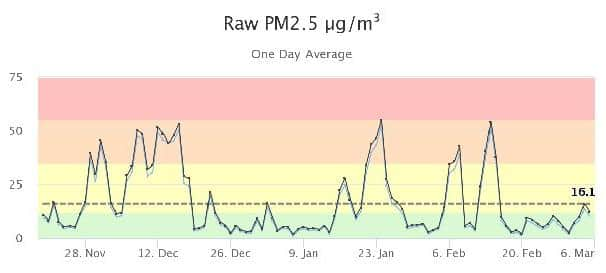

Mark warns that the effect of wood burning in stoves and open fires has been as misunderstood as the practice is unnecessary.
“Unfortunately, people have been lulled into the false impression that it’s green, clean and good for the climate – but the total opposite is true.
“The vast majority of [wood-burning] homes have gas central heating and use it as an additional source of heat or a ‘cosy’ factor. It is cosy…[but] they could do without it.
Advertisement
Hide AdAdvertisement
Hide Ad“We have to take people with us and the cost-of-living crisis makes it a little bit [more difficult], with the cost of gas going up. A lot of people are getting free scrap wood, which has been treated – and that’s even worse, because [during combustion], it’s then mixing with creosote or whatever it has been treated with.
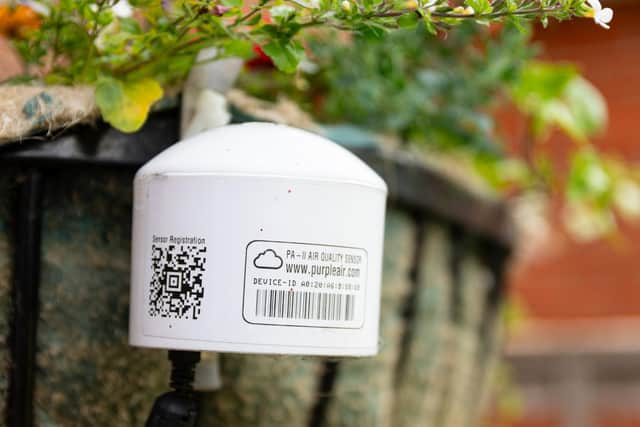

“PM2.5 is one of the most health damaging forms of air pollution and yet it is increasing because people are merrily installing wood burners left, right and centre,” Mark added.
In 2021, the WHO introduced new guidelines stating that annual average concentrations of PM2.5 should not exceed 5 µg/m3, while 24-hour average exposures should not exceed 15 µg/m3 for more than 3-4 days per year.
England, Wales and Northern Ireland have adopted an objective of annual PM2.5 levels not breaching 20 μg/m3 – four times the WHO limit – and have set no daily target.
Advertisement
Hide AdAdvertisement
Hide AdMark – who is the Green Party’s candidate in the Chorley constituency at the next general election – says that the monitoring station he installed on Devonshire Road, south of the town centre, has recorded the highest levels in his mini-network, with the WHO’s daily limit being regularly exceeded in that location.
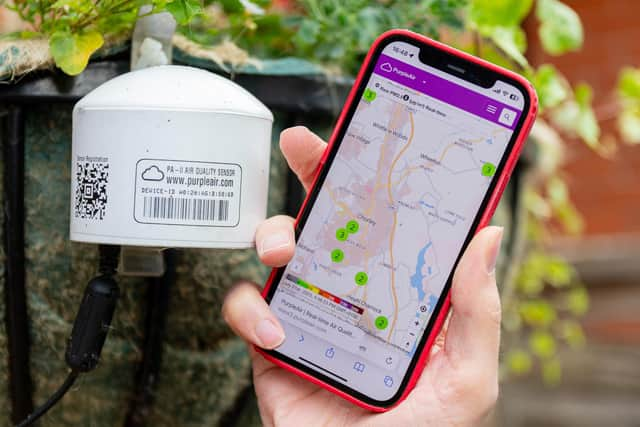

Another device in the south west of the borough – which was put in place after concerns raised by a resident about the amount of wood burning happening in their neighbourhood – recorded a daily average of 16.1 μg/m3 between November 2022 and March 2023, with more than 40 exceedances of the WHO-recommended maximum during that period, as opposed to the three or four deemed acceptable by the organisation.
While he accepts that the modestly-priced equipment he is using might not be quite as accurate as the technology the council will be able to deploy, Mark has challenged the authority to prove him wrong if it has data that contradicts his findings.
In the meantime, he says that he is willing to fund a few more of the unobtrusive wi-fi devices to expand monitoring coverage to those parts of the borough where it is lacking – but would also welcome anyone able to purchase the £250 equipment themselves and so bolster the network yet further. One resident has recently done just that, taking the total number of monitors in the borough to seven.
Advertisement
Hide AdAdvertisement
Hide Ad“It makes the invisible visible – because if you don’t even know something is a problem, you can’t do anything about it,” Mark said.
HOW DO I GET INVOLVED?
To volunteer to host a particulate matter monitor – or to offer to purchase one and submit the results to the existing network in Chorley – email Mark Tebbutt via [email protected].
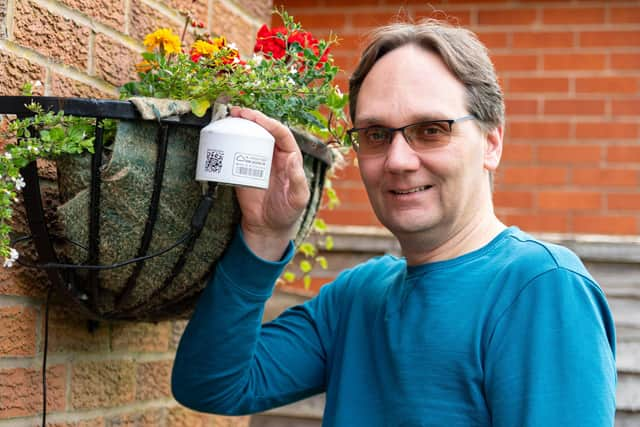

‘WE ARE COMMITTED TO CLEAN AIR’, COUNCIL DECLARES
Responding to Mark Tebbutt’s concerns and the results from the PM2.5 monitoring network he has established, Cllr Adrian Lowe, Chorley Council’s cabinet member for customer, streetscene and environment, said, “Air quality is a priority for us, as it’s an important factor in improving the environment and reducing harm to health.
“As well as monitoring air quality around the borough we are delivering a range of environmental and biodiversity-enhancing measures to promote clean air, reduce carbon emissions and enable more green ways of travel.
Advertisement
Hide AdAdvertisement
Hide Ad“We have invested in automatic particulate monitors which are located in strategic areas across the borough. The monitoring and modelling data that has been collected in the last 12 months – and compared with national data – shows that air quality in Chorley is good and compliant with the UK National Air Quality Objectives.
“These national objectives are the standards by which we monitor and assess air quality data. The data we rely on is required to meet a rigorous independent testing framework, with stringent quality assurance and quality control procedures.
“We cannot comment on the data collected by residents, as this data has not been shared with us for verification. However, if residents have specific concerns, we encourage them to report it to our Environmental Health department who can give further advice and information,” Cllr Lowe added.
WHAT IS PARTICULATE MATTER – AND WHERE DOES IT COME FROM?
Particulate matter is everything in the air that is not a gas – and so can be made up of a wide variety of chemical compounds and materials, some of which can be toxic.
Advertisement
Hide AdAdvertisement
Hide AdThe small size of many of the particles that form particulate matter means some of those toxins may get into the bloodstream and be carried around the body, before ultimately lodging in the heart, brain and elsewhere.
Exposure to particulate matter can result in serious harm to human health, especially in vulnerable groups, including the young, elderly and those with respiratory problems.
Particulates are classified according to size. The UK is currently focused on measuring the fractions of PM where particles are less than 10 micrometres in diameter (PM10) and less than 2.5 micrometres (PM2.5), based on the latest evidence on the effects of particulate matter to health.
Both particulate matter and the pollutants from which it forms can travel large distances in the atmosphere. Around 15 percent of the concentrations of particulates – of all sizes – to which people in the UK are exposed come from naturally occurring sources such as pollen and sea spray, while another third is transported to these shores from other European countries.
Advertisement
Hide AdAdvertisement
Hide AdHowever, around half of UK concentrations of particulate matter come from human-generated sources like wood burning and tyre and brake wear from vehicles.
The government says that “it is in the interest of the UK to identify and reduce these…emissions where possible”.
Levels of particulate matter in the UK have plummeted by around 80 percent since 1970, but there have been upticks in both PM2.5 and PM10 in recent years, which rose by eight and six percent respectively between 2020 and 2021.
The long-term decrease in levels of both pollutants was driven by a reduction in the burning of coal and improved emission standards for transport and industrial processes. More recently, considerable decreases in emissions from some sectors have been largely offset by increases from wood burning in the home and solid fuel burning by industry, particularly the burning of biomass.
Advertisement
Hide AdAdvertisement
Hide AdAfter domestic combustion – which accounted for 27 percent of PM2.5 emissions in 2021 – the largest source of particulate matter in the UK was from the burning of fuel on industrial sites, either to generate energy or to drive mobile machinery, making up 26 percent of such emissions that year.
Although the volume of particulate matter from vehicle exhaust emissions has collapsed by 90 percent since the mid-1990s, as result of stricter standards, road transport remains a major source of the pollutant – 13 percent of the PM2.5 tally in 2021 – because of the material generated by brake, tyre and road dust.
A European directive requires the UK to reduce PM2.5 emissions by 46 percent compared to 2005 levels by 2030.
Source: Department for Environment, Food and Rural Affairs